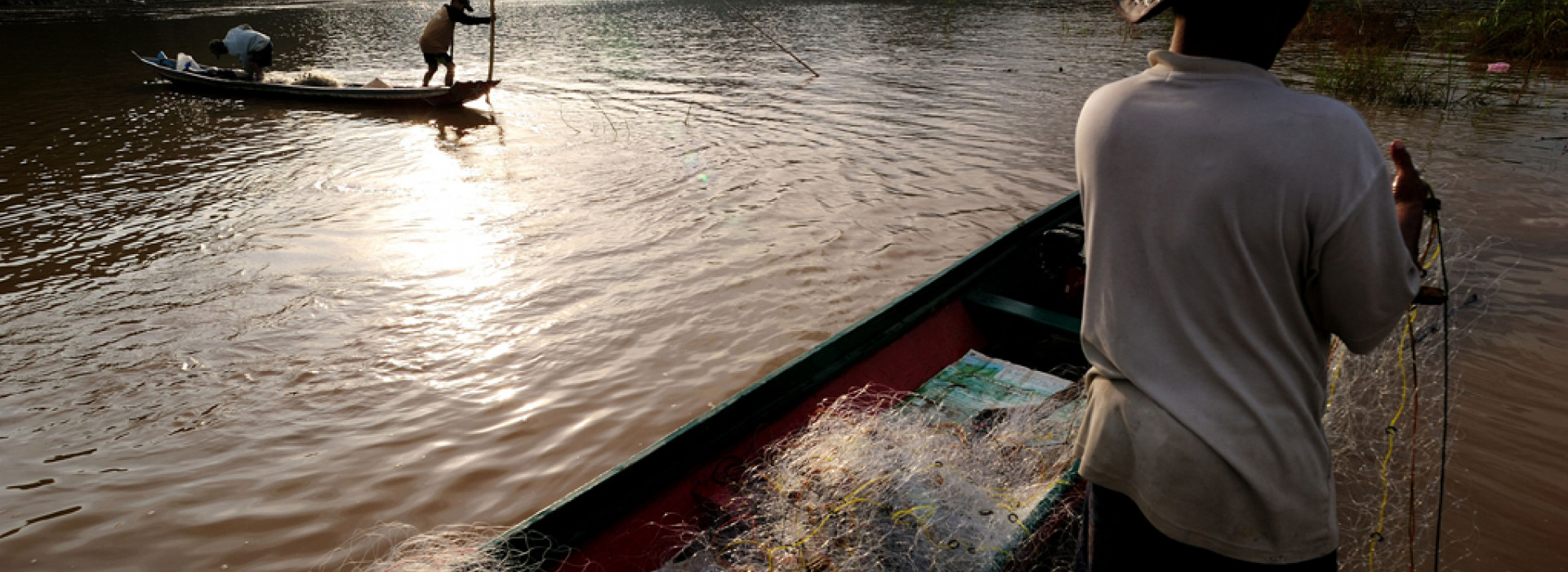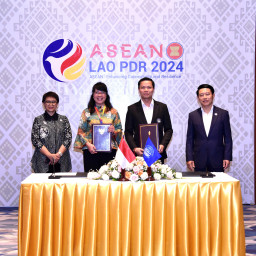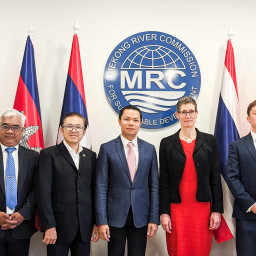MRC Statement on the occasion of PDIES 15th anniversary “MRC is Indispensable for the Mekong”
Fifteen years ago today, ministerial delegates of the Mekong River Commission Council adopted a set of procedural rules on multilateral data sharing among the four Mekong riparian countries of Cambodia, Lao PDR, Thailand and Viet Nam to enhance regional cooperation and advance sustainable development of the lower Mekong River Basin.
The Procedures for Data and Information Exchange and Sharing, known as PDIES, set a framework for the member states to share and exchange data on water resources, topography, agriculture, navigation, flood management and ecology, among others, for joint management of the shared water and related natural resources in the region. PDIES data sharing has allowed, for example, the MRC to provide real-time water level information and more accurate flood warning.
It was the MRC’s first set of rules to support the coordination of intergovernmental technical cooperation among the four countries. Since then, the MRC has adopted a series of procedures for transboundary water quality management, water use monitoring, water flow maintenance, and water use consultations to provide a systematic and uniform process for the implementation of the 1995 Mekong Agreement that established the Commission. This is one of the key achievements of the MRC in its history. No other basin in the developing world has such comprehensive rules to manage their transboundary rivers. The Mekong riparian countries have negotiated, agreed upon and respected these procedures.
Their commitment to collaboration demonstrates the quintessential Mekong Sprit. It is this spirit that has enabled the member countries to come together for more than 20 years despite their differences in political system and development stage. No other mechanism in the region has been able to provide a legitimate platform for transboundary water cooperation than the MRC, where all the governments, from prime ministers to ministers and directors to technical experts and broader stakeholders, are committed to working together.
We are also proud that no other organisation within and outside the region has more data and information about the Mekong than the MRC. The Commission has generated a score of knowledge from our predecessors’ river monitoring efforts since the 1950s and the MRC’s recent basin-wide assessments, all of which have supported the countries in planning and decision-making. The MRC has produced hundreds of technical publications in agriculture, basin planning, climate change adaptation, environment, fisheries, flood management, hydropower development and navigation. It has created an online database and information centre for the public to access to the collection of data. It should be noted that many of MRC studies and assessments have gone through an extensive, often time-consuming process of consultations within and between countries to ensure the accumulated knowledge be relevant and representative.
MRC knowledge helps the member countries materialise a common strategy to develop the Mekong from a basin-wide perspective. The MRC formulated and approved the first ever Lower Mekong Basin Development Strategy in 2011, and then renewed it in 2016. The strategy identifies development opportunities, long and medium term risks, and priorities for development and management of water resources in the region, setting out strategic directions for a better future of the basin. The MRC advances this strategy with its five-year strategic plan for action while the member countries translate it into their national strategic plans.
The perspectives and priorities of the basin development strategy have been integrated into national planning process. The MRC guidelines in hydropower, navigation, fisheries and environment assessments, for example, have been used by the member states to deal with their development issues. There are a number of cases that the governments and private developers have changed their project plans after taking the MRC recommendations into considerations. In the case of the Xayaburi Hydropower project in Lao PDR, the government and the developer have invested an additional $400 million to redesign the plan to institute mitigation measures to address the issues of fish migration and sediment. This is value for money.
Despite these achievements, the MRC does not remain static. Recognising challenges ahead due to the complex nature of transboundary water resources management and the need for a better organisational setup to respond faster, the MRC commenced far-reaching reforms in operational, financial and administrative fronts. The move commenced when the prime ministers of the four member states met in 2010 to reaffirm the mandate of the MRC and set a goal of self-sufficiency that the Commission will be self-financed by 2030.
Under the reforms, the MRC has shifted away its mode of operations from donor-driven programmes to pooled-fund, core function-based activities increasingly funded by countries. With this new approach, the MRC allocates funds to priority areas. The reform has also introduced a better control over the cost of meetings and interventions, and instituted a new monitoring and evaluation system that ensures mutual accountability and results against the MRC strategies, guidelines and procedures. These new approaches are expected to strengthen efficiency and effectiveness of the organisation.
Donors who have tirelessly supported the MRC over the years acknowledge these changes and have praised that the MRC is more relevant than ever. They remain supportive, and have committed US$32.1 million with financial agreements as well as pledged another US$15.6 million for the current strategic cycle of 2016-2020. The member countries have also committed US$12.5 million over the next five years, increasing US$3 million from the previous five-year cycle. Altogether, the MRC has secured more than 90 per cent of the financial requirements of US$65 million in the current strategic cycle.
Over the last 20 years since its establishment in 1995, the MRC has worked tirelessly to support the member countries to jointly manage the Mekong water resources in an equitable manner. No other organization in the Mekong region has the mandate, knowledge, platform, and influence as the MRC does. The Commission is certainly not perfect but it is indispensable for Mekong transboundary water cooperation and diplomacy.
Note to editors:
The MRC is the intergovernmental body responsible for cooperation in the sustainable management of the Mekong Basin. It was established by a 1995 agreement between Cambodia, Lao PDR, Thailand and Viet Nam. It serves as a regional platform for water diplomacy as well as a knowledge hub of water resources management for the sustainable development of the region. It is not a supra-national or regulatory body. The commission looks across all sectors including sustaining fisheries, identifying opportunities for agriculture, maintaining the freedom of navigation, enhancing flood management and preserving important ecosystems. .
-END-





